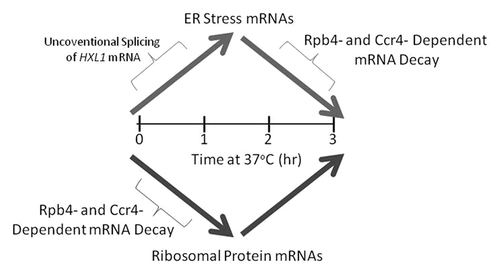Figures & data
Figure 1. A model depicting the role of posttranscriptional processes in host temperature adaptation of C. neoformans. Upon a shift to 37 °C, the ER stress response is initiated by HXL1 mRNA splicing to generate the active transcription factor Hxl1, which goes on to promote transcription of ER stress genes. Concurrently, ribosomal encoding transcripts levels decrease due to Rbp4 and Ccr4 dependent mRNA decay. During the shutoff phase of the ER stress response Ccr4 and Rbp4 play a role in the degradation and decrease of ER stress transcripts.

